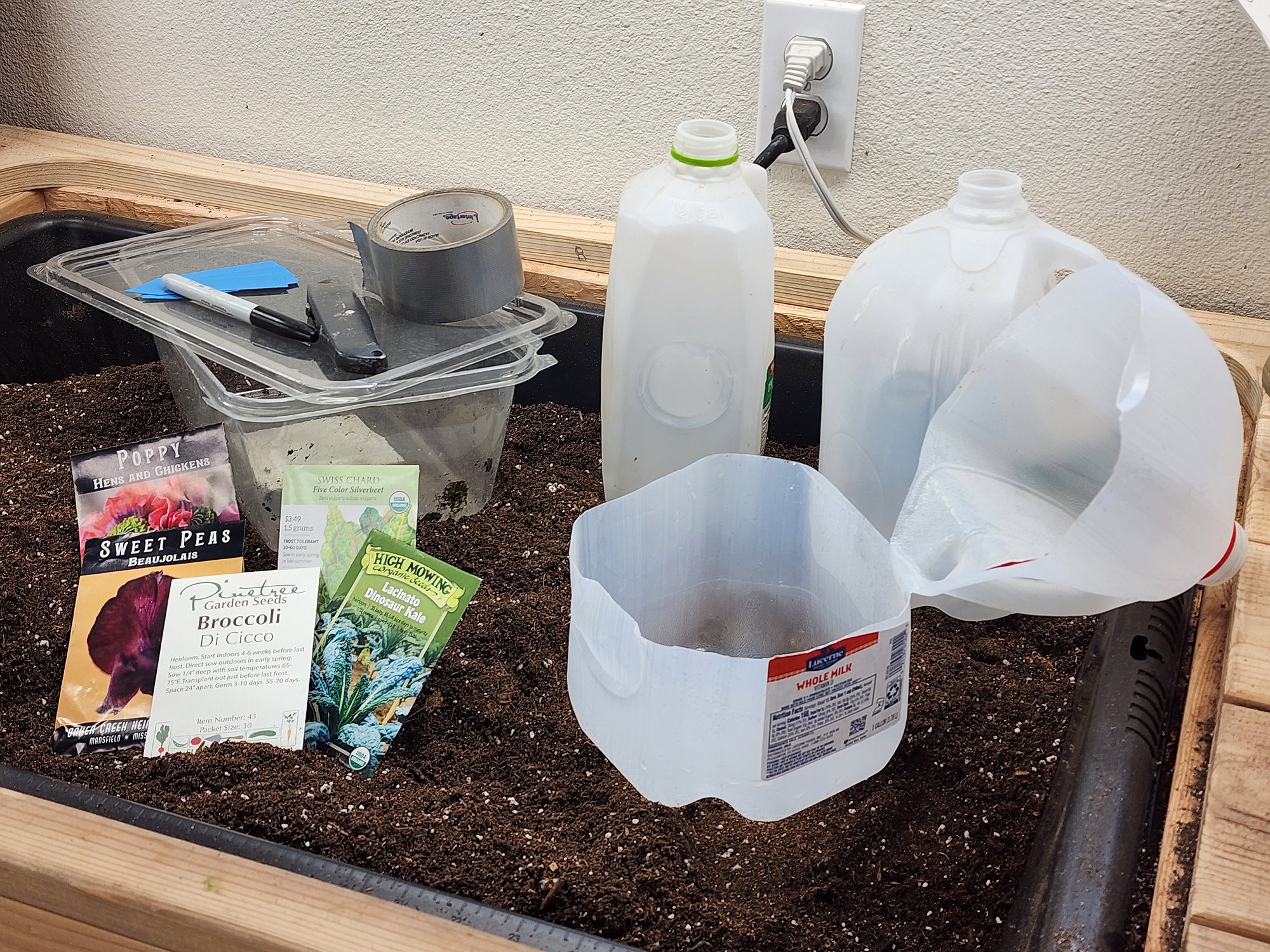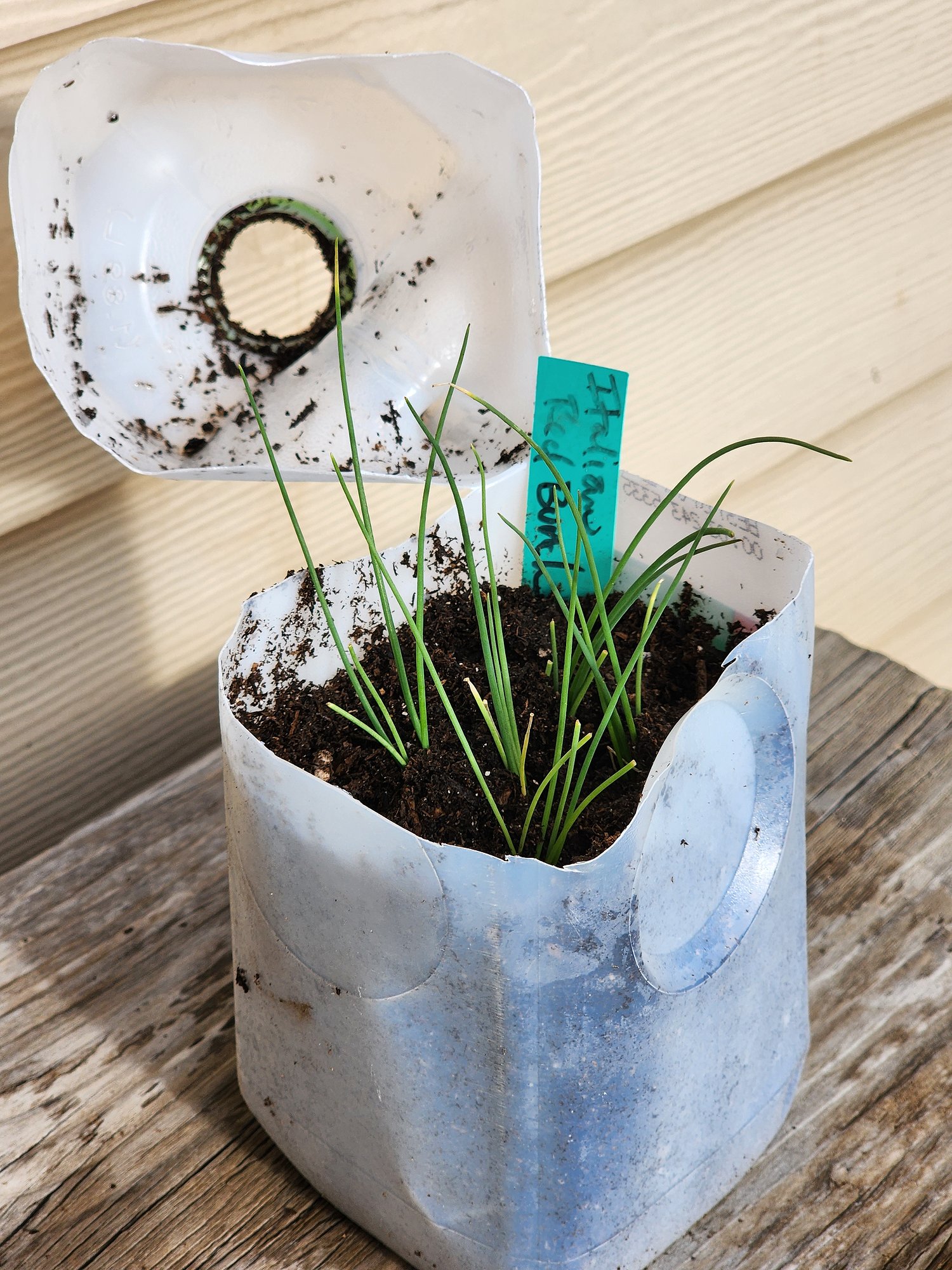Get a jump on your spring garden with winter sowing
January and February are difficult months for gardeners living in northern climes. There’s just not much you can do when the ground is frozen and covered with snow. Plus, it’s still too early to do much indoor seed starting.
Thankfully, it is the perfect time for winter sowing – a method of starting seeds outside in late winter, usually between January and March, for spring transplanting. You’re surely wondering how this is even possible in our cold, Idaho climate? It’s completely doable, easy and fun with the help of a few items you probably have in your house right now.
Winter sown seeds are planted in recycled containers, like milk jugs or plastic food containers, and then placed outdoors – yes, in the cold, wet, snowy, frozen winter – where Mother Nature will trigger germination at just the right time for the plant.
Of course, during the coldest periods nothing is actually growing, although seeds that need a cold period to break dormancy (known as stratification) will get it. As the days lengthen and warm, the seeds will begin to germinate and grow into very hardy seedlings.
Benefits of winter sowing
In addition to the simplicity and ease of starting vegetables, herbs, and flowers with winter sowing, there are a few other benefits:
- It saves money since expensive seed starting equipment is not required; only a few, low-cost and recycled supplies are needed.
- There’s no seed-sowing schedule. No need to worry about frost dates or sowing timing; seeds germinate when the conditions are right for them.
- It provides natural stratification for chemically dormant seeds that require a cold period to break dormancy.
- It’s a time saver as winter sowing reduces or eliminates the need to harden off seedling transplants in the spring.
What to sow
Cool-season vegetables, perennials, and hardy annual flowers are great choices for winter sowing. Get a jump on your spring vegetable garden by winter sowing broccoli, kale, spinach, lettuce, peas, and chard.
While it is possible to winter sow warm-season crops like tomatoes and peppers, the timing is later in the spring when the weather is warmer. Warm-season crops require warm soil to germinate (at least 70 degrees F), and while the mini-greenhouse effect of a milk jug can provide heat during the day, it’s likely that the soil temperature will drop considerably in the overnight hours. You may find better success starting warm-season crops indoors.
Many flowers and herbs, especially those that require cold stratification (coneflowers, milkweed or rosemary), are excellent choices for winter sowing as well. Since winter sowing is such a low-cost growing method, you can experiment with differ seeds to see how they grow!
Simple supplies for winter sowing
Almost any recycled plastic container can be used for winter sowing – opaque milk and water jugs, 2-liter soda bottles, food containers with clear lids, even small plastic totes (shoe box size) – will work. It just needs to hold 3 to 4 inches of soil and have drainage holes in the bottom.
Plastic milk and water bottles have worked the best in my experience – they tend to be a bit sturdier and the opaque plastic protects emerging seedlings from the sun/heat better than clear plastic containers.
For milk jugs, remove the cap and thoroughly rinse the container. Next, using an awl (nail or scissor), punch several drainage holes in the bottom and around the container’s neck. Next, using a scissor or box knife, cut the jug in half, just below the handle, leaving the area under the handle intact.
Fold back the halves and fill the container with moist potting mix. If small seeds are being sown, add a layer of seed starting medium on top of the potting mix for better germination. Sow seeds as directed on the seed packet and water thoroughly. Insert a plant label with the variety and date sown and then seal the container with duct tape. It’s a good idea to label the outside of the container too.
Place the jugs outside where they will receive moisture, but somewhat protected from wind. An eastern exposure with morning sun and some afternoon shade works well. This positioning will provide enough warmth for germination, but will help avoid scorching tender seedlings when temperatures start to warm up.
Check the container periodically and water gently through the top opening if needed. As the seedling emerge and develop in early spring, you may need to remove the duct tape and open the contain to allow for more air circulation.
So how long does winter sowing take? That depends on the seed, the weather, and Mother Nature. Be patient and when the time is right, your seeds will germinate and produce hardy seedlings that will be ready to plant into the garden once the soil warms. Happy winter sowing!
Candace Godwin is a certified Idaho Master Gardener and the owner of The Coeur d’Alene Coop (thecoeurdalenecoop.com), a blog on gardening and raising backyard chickens.





